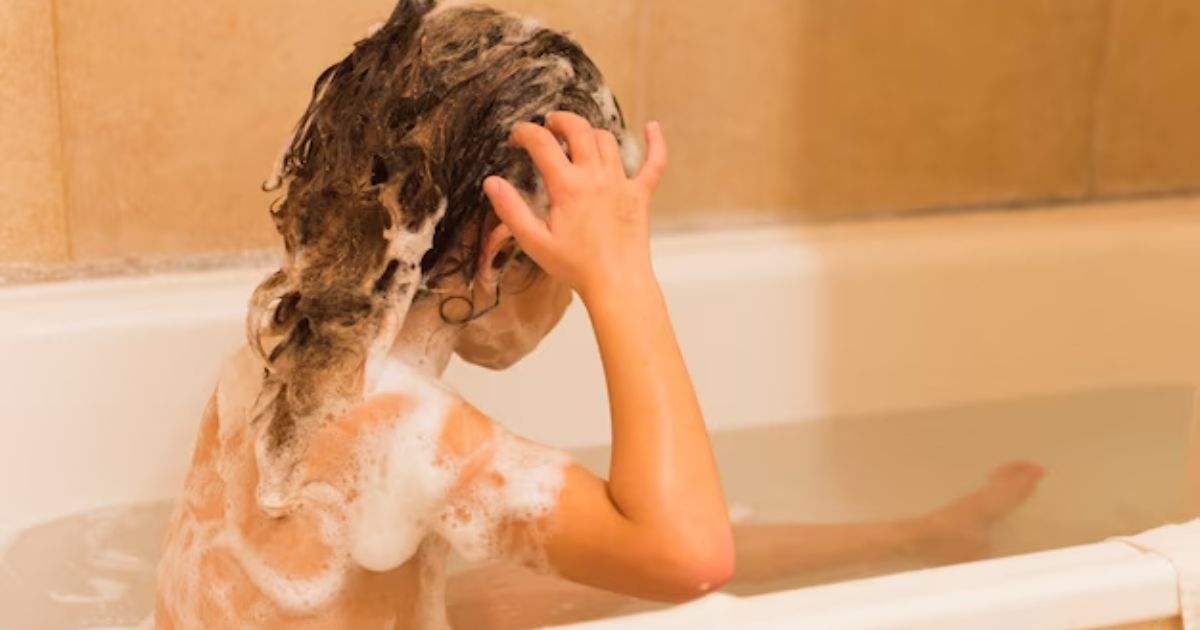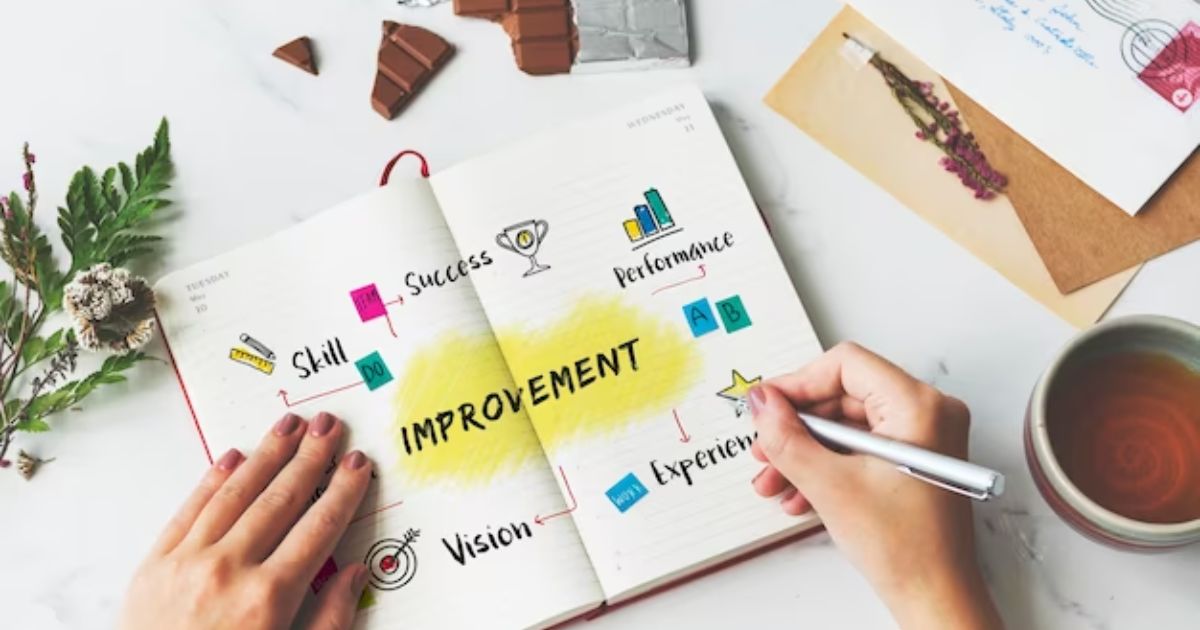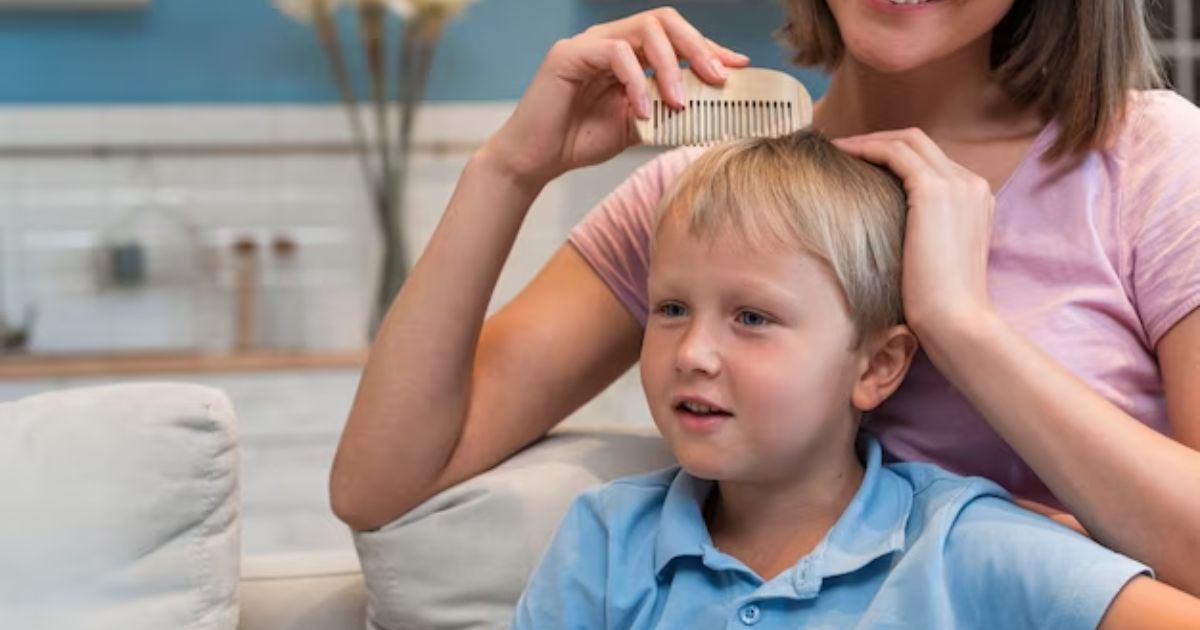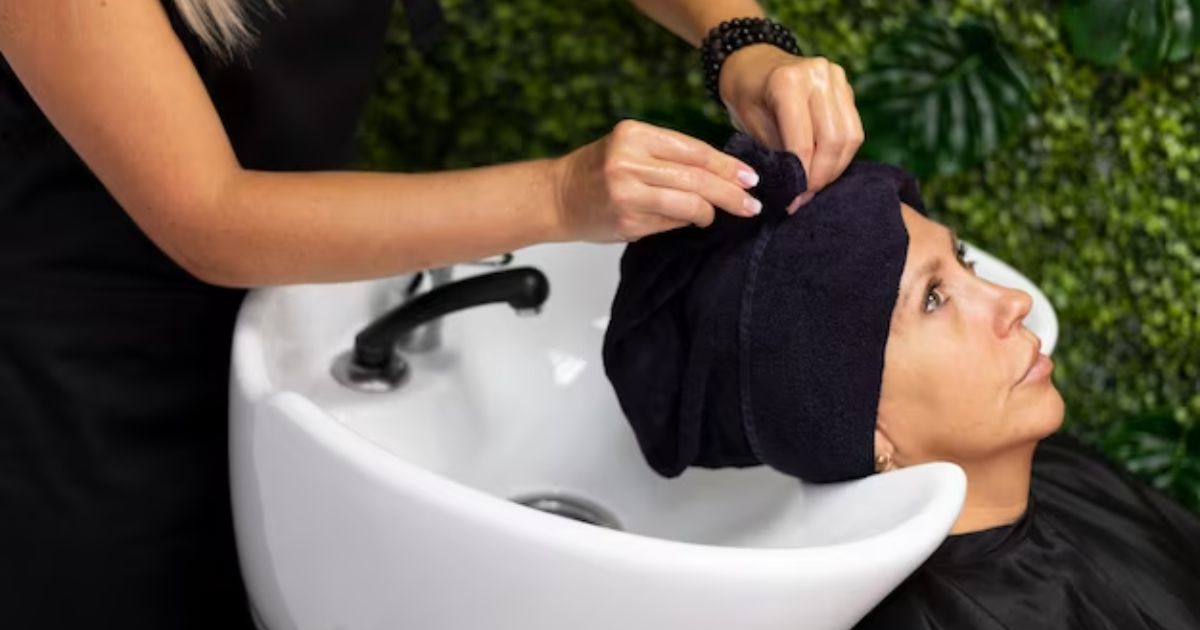Did you know that 90% of parents struggle to wash their toddler’s hair without getting water in their eyes? If you’re one of them, fret not! In this article, we will share expert tips and techniques to ensure tear-free hair washing for your little one. From choosing the right shampoo and conditioner to gentle washing and drying techniques, we’ve got you covered. Say goodbye to watery eyes and hello to stress-free hair washing!
Key Takeaways
- Create a warm and inviting bathroom environment
- Use tear-free shampoo specifically designed for toddlers
- Wet the hair slowly and start from the back of the head
- Use a washcloth or visor to shield the eyes
The Importance of Preparation
Before embarking on the task of washing a toddler’s hair without causing discomfort, it is crucial to thoroughly prepare both the child and the surrounding environment. Preparation, including the use of a hair toner, plays a vital role in ensuring a smooth and enjoyable hair-washing experience for both the toddler and the caregiver. Set the stage by creating a warm and inviting bathroom environment. Make sure the water temperature is comfortable, and have all necessary supplies within reach, such as shampoo, conditioner, and a towel.
Engage the child in a playful and interactive conversation about hair-washing to alleviate any fears or concerns they may have. Additionally, consider using a tear-free shampoo specifically designed for toddlers to minimize the risk of getting water in their eyes. By taking these steps, you can establish a sense of comfort and security, making the hair-washing process more enjoyable for both the child and the caregiver.
Choosing the Right Shampoo and Conditioner
When it comes to choosing the right shampoo and conditioner for your toddler, it’s important to opt for gentle hair products specifically designed for their delicate scalp and hair. Look for tear-free formulas that are mild and hypoallergenic, ensuring a gentle and soothing experience during hair wash time. Brands that offer “No More Tears” products are a great option, as they are specially formulated to minimize any potential discomfort or irritation to your toddler’s eyes.
Gentle Hair Products
One crucial factor to consider when selecting the appropriate shampoo and conditioner for your toddler’s hair is the pH level. The pH level of a product determines its acidity or alkalinity, and it plays a significant role in maintaining the health of your toddler’s hair and scalp. To ensure that you are choosing gentle hair products for your little one, here are four important considerations:
- Look for products specifically designed for children. These products are formulated to be gentle and mild, avoiding harsh chemicals that can irritate your toddler’s delicate skin.
- Opt for sulfate-free shampoos and conditioners. Sulfates can strip away natural oils from the hair, leaving it dry and prone to damage.
- Choose products with natural ingredients such as aloe vera, chamomile, and coconut oil. These ingredients are known for their soothing and moisturizing properties, keeping your toddler’s hair soft and healthy.
- Consider hypoallergenic options. These products are formulated to minimize the risk of allergic reactions, making them suitable for toddlers with sensitive skin.
Tear-Free Formulas
To ensure a gentle and tear-free hair-washing experience for your toddler, it is important to carefully choose the right shampoo and conditioner. When it comes to selecting tear-free formulas, look for products that are specifically designed for children. These shampoos and conditioners are formulated with gentle ingredients that won’t irritate your little one’s eyes. They are also free from harsh chemicals and fragrances that can cause discomfort.
Opt for products that are hypoallergenic and dermatologist-tested to minimize the risk of any allergic reactions. Additionally, consider choosing a shampoo and conditioner combo that is specifically designed for your toddler’s hair type, whether it’s curly, straight, or fine. By selecting the right tear-free formulas, you can make hair washing a pleasant experience for your child and avoid any tears or discomfort.
No More Tears
For a tear-free hair-washing experience for your toddler, carefully select the appropriate shampoo and conditioner. Here are four factors to consider when choosing the right products:
- Gentle Formulas: Look for shampoos and conditioners specifically designed for toddlers. These products are formulated to be mild and gentle on your child’s delicate scalp and hair.
- Tear-Free Labels: Opt for products that are labeled as “tear-free.” These formulas are specifically designed to minimize irritation and avoid stinging if they happen to get into your child’s eyes.
- Hypoallergenic Options: Consider using hypoallergenic shampoos and conditioners. These products are less likely to cause skin irritations or allergic reactions, making them ideal for toddlers with sensitive skin.
- Natural Ingredients: Choose products that contain natural ingredients, such as chamomile or aloe vera. These ingredients can help soothe the scalp and minimize any discomfort your toddler may experience during hair washes.
Wetting the Hair Without Overwhelming Your Toddler
The parent’s approach to wetting their toddler’s hair should prioritize gentle and gradual methods to avoid overwhelming the child. It is important to create a comfortable and safe environment for your toddler during hair-washing time. Begin by using a small cup or a soft cloth to wet their hair slowly. Start from the back of the head, allowing the water to trickle down gently. This method prevents sudden splashes and minimizes the chances of water getting into their eyes.
You can also try using a spray bottle filled with water to mist their hair. This method provides a light and even distribution of water, reducing the likelihood of overwhelming your toddler. Remember to communicate with your child, reassuring them that you will be careful and taking breaks if needed. By using these gentle and gradual methods, you can ensure a positive hair-washing experience for your little one.
Using a Washcloth or Visor to Shield the Eyes
During the hair-washing process, parents can protect their toddler’s eyes by utilizing a washcloth or visor to shield them from water. This method is not only effective in preventing water from getting into their eyes but also provides a sense of comfort and security for your child. Here are four ways you can use a washcloth or visor to shield your toddler’s eyes:
- Washcloth Barrier: Wet a washcloth and gently place it over your child’s forehead, creating a barrier between their eyes and the water. This will help prevent water from dripping down their face.
- Visor Protection: Invest in a visor specifically designed for hair washing. These visors are equipped with a brim that redirects water away from your child’s face, keeping their eyes safe and dry.
- Fun Bath Visors: Choose a visor with playful designs or characters that your child will love. This will make the hair-washing experience more enjoyable and engage their imagination.
- Washcloth Splash Guard: Fold a washcloth into a triangle and place it on the back of your child’s head, covering their ears. This will act as a splash guard, preventing water from running down their face.
Gentle Techniques for Shampooing and Rinsing
What are some gentle techniques to use when shampooing and rinsing a toddler’s hair without getting water in their eyes? When it comes to washing a toddler’s hair, it is important to be gentle and careful to avoid any discomfort or irritation. One technique is to use a cup or a small container to pour water over their head instead of directly using the showerhead.
This allows for better control and prevents water from getting into their eyes. Additionally, using a tear-free shampoo specifically designed for children can minimize the risk of irritation. It is also helpful to tilt their head back slightly when rinsing to ensure water runs away from their face. By using these gentle techniques, you can wash your toddler’s hair without causing any discomfort or getting water in their eyes. Now, let’s move on to the next section about drying and styling without irritating the eyes.
Drying and Styling Without Irritating the Eyes
When it comes to drying and styling your toddler’s hair, it’s important to use gentle towel techniques to avoid irritating their eyes. Instead of vigorously rubbing their hair, gently pat it dry with a soft towel. Additionally, using a hairdryer on the lowest heat setting and keeping it at a safe distance from their face can help prevent any discomfort or irritation to their eyes.
Gentle Towel Techniques
To ensure a comfortable experience for your toddler, carefully pat their hair dry using gentle towel techniques that minimize the risk of water getting into their eyes.
Here are four gentle towel techniques to dry and style your toddler’s hair without irritating their eyes:
- Use a soft, absorbent towel: Choose a towel with a soft texture that won’t scratch or irritate your toddler’s delicate skin. Look for towels made from microfiber or cotton for maximum absorbency.
- Pat, don’t rub: Instead of vigorously rubbing your toddler’s hair, gently pat it dry with the towel. This helps to remove excess water without causing discomfort.
- Start at the roots: Begin drying your toddler’s hair from the roots and work your way down to the ends. This ensures that the hair is evenly dried and minimizes the risk of water dripping into their eyes.
- Use a wide-toothed comb: After towel drying, use a wide-toothed comb to gently detangle your toddler’s hair. This prevents any hair pulling or tugging, which could lead to discomfort or tears.
Using a Hairdryer Safely
A key tip for using a hairdryer safely and preventing any irritation to your toddler’s eyes is to maintain an appropriate distance between the dryer and their face. This is crucial because the hot air emitted by the hairdryer can cause discomfort and dryness if it comes into direct contact with their delicate eyes. To ensure safety, hold the hairdryer at least 12 inches away from your toddler’s head while drying their hair.
This will allow the warm air to circulate without blowing forcefully into their eyes. Additionally, it’s important to use the lowest heat setting possible to minimize the risk of overheating their scalp or causing discomfort. By following these precautions, you can dry and style your toddler’s hair without causing any irritation to their eyes.
Bonus Tips and Tricks for Tear-Free Hair Washing
Providing a gentle and soothing environment during the hair-washing process can greatly contribute to a tear-free experience for toddlers. Here are four bonus tips and tricks to ensure a tear-free hair-washing experience for your little one:
- Use a tear-free shampoo: Look for shampoos specifically designed for toddlers that are labeled as tear-free. These shampoos are formulated to be gentle on the eyes and minimize any potential discomfort.
- Use a soft washcloth: Instead of pouring water directly onto your toddler’s head, wet a soft washcloth and gently wipe their hair. This helps to control the amount of water that comes into contact with their face and reduces the risk of getting water in their eyes.
- Sing or play soothing music: Distraction can be a powerful tool when it comes to keeping your toddler calm during hair washing. Sing their favorite song or play some soothing music to create a calming atmosphere.
- Reward their cooperation: Positive reinforcement goes a long way in encouraging good behavior. Praise and reward your child for cooperating during hair washing, whether it’s with a small treat or a sticker chart.
FAQ’s
How Often Should I Wash My Toddler’s Hair?
The frequency of washing a toddler’s hair depends on factors such as their hair type, activity level, and exposure to dirt or sweat. It is generally recommended to wash their hair 1-2 times a week to maintain cleanliness and scalp health.
Can I Use Adult Shampoo on My Toddler’s Hair?
Adult shampoo is not recommended for toddlers due to its harsh chemicals. Instead, opt for a gentle, tear-free shampoo specifically designed for children. Prioritize their safety and comfort during hair washing to prevent water from getting in their eyes.
Should I Use Warm or Cold Water to Wet My Toddler’s Hair?
To ensure a comfortable and tear-free hair-washing experience for your toddler, it is recommended to use warm water to wet their hair. This helps to relax the scalp and make the process more enjoyable.
How Long Should I Leave the Shampoo in My Toddler’s Hair Before Rinsing?
To ensure a comfortable and tear-free hair-washing experience for your toddler, it is important to focus on the current question of how long to leave the shampoo in their hair before rinsing.
What Type of Towel Should I Use to Dry My Toddler’s Hair?
To ensure a comfortable and effective hair-drying experience for your toddler, it is important to choose a towel that is soft, absorbent, and gentle on their delicate skin and hair. Look for towels made from materials like microfiber or bamboo, as they tend to be softer and less likely to cause irritation. Additionally, consider the size of the towel, opting for one that is large enough to fully cover your toddler’s head and absorb excess moisture. By selecting the right towel, you can help prevent discomfort and keep your toddler’s hair healthy and dry.
Conclusion
In conclusion, washing a toddler’s hair without getting water in their eyes requires careful preparation and gentle techniques. By choosing the right shampoo and conditioner, wetting the hair without overwhelming it, using a washcloth or visor to shield your eyes, and employing gentle techniques for shampooing and rinsing, you can ensure a tear-free hair-washing experience. Remember to dry and style their hair without irritating their eyes. With these tips and tricks, bath time can be a fun and enjoyable experience for both you and your little one.











